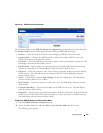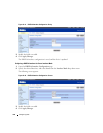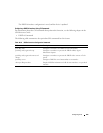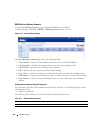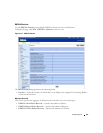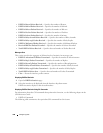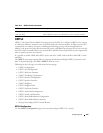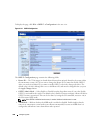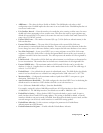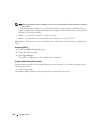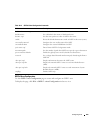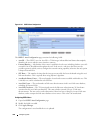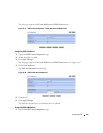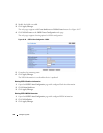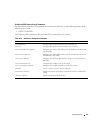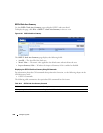
Configuring IPv6 641
•
ABR Status
— The values of this are Enable or Disable. The field displays only when a valid
configuration exists. Enabled implies that the router is an area border router. Disabled implies that it is
not an area border router.
•
Exit Overflow Interval
— Enter the number of seconds that, after entering overflow state, the router
should wait before attempting to leave overflow state. This allows the router to again originate non-
default AS-external-LSAs. If you enter 0, the router does not leave Overflow State until restarted. The
range is 0 to 2147483647 seconds.
•
External LSA Count
— The number of external (LS type 5) LSAs (link state advertisements) in the
link state database.
•
External LSA Checksum
— The sum of the LS checksums of the external LSAs (link state
advertisements) contained in the link-state database. This sum can be used to determine if there has
been a change in a router's link state database, and to compare the link-state databases of two routers.
•
New LSAs Originated
— In any given OSPFv3 area, a router originates several LSAs. Each router
originates a router-LSA. If the router is also the Designated Router for any of the area's networks, it
originates network-LSAs for those networks. This value represents the number of LSAs originated by
this router.
•
LSAs Received
— The number of LSAs (link state advertisements) received that were determined to
be new instantiations. This number does not include newer instantiations of self-originated LSAs.
•
External LSDB Limit
— The maximum number of AS-External-LSAs that can be stored in the
database. A value of -1 implies there is no limit on the number that can be saved. The valid range of
values is -1 to 2147483647.
•
Default Metric
— Sets a default for the metric of redistributed routes. This field displays the default
metric if one has already been set or blank if not configured earlier. Valid values are 1 to 16777214.
•
Maximum Paths
— Configure the maximum number of paths that OSPFv3 can report to a given
destination. Valid values are 1 to 4.
•
AutoCost Reference Bandwidth
— This field configures the value that OSPFv3 uses in calculating the
default metric for an interface. OSPF calculates the link cost of each interface as:
Cost = (Reference Bandwidth in Mbps) / (Interface Bandwidth).
For example, setting this value to 1000 Mbps would cause all 1-Gbps interfaces to have a default cost
of 1000/1000 = 1. For 100 Mbps interfaces, the default cost would be 1000/100 = 10.
•
Default Passive Setting
— Select whether OSPFv3 interfaces default to passive mode. In passive
mode, interfaces do not send OSPF routing updates. This setting is disabled by default, so that all
interfaces default to non-passive mode. If enabled, then all interfaces default to passive mode, and the
network manager can selectively enable interfaces to send OSPF routing updates.
•
Default Route Advertise:
Use this section to configure the parameters for Default Route
Advertisements into OSPF domain.
•
Default Information Originate
— Enable or disable Default Route Advertise.



